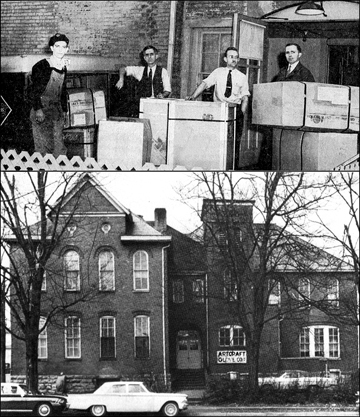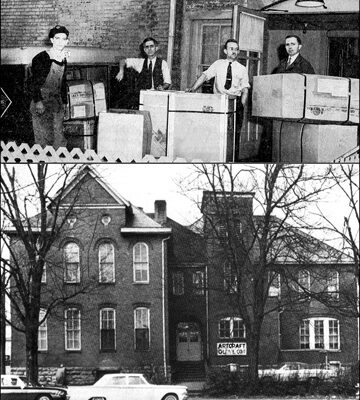In 1943, there arose a need for increased production of quality gloves brought about by the war effort and increasing civilian demands.
Tom Lee, in his excellent book, The Tennessee-Virginia Tri-Cities (U.T. Press, 2005) noted that during World War II “while wartime demand increased manufacturing activity across the Tri-Cities area, the distribution of major new employers during the war reflected a growing disparity among the urban centers that made up the Tri-Cities. Elizabethton continued to rely on the rayon industry. Johnson City recruited only one new firm, the Artcraft Glove Company of Tennessee.”

The big news came from Mr. Patrick Crocetta, president of the Artcraft Glove Company of New York with several factories in operation there. He announced that his company was expanding operations to Johnson City. The plant became a reality for our city after five years of negotiations between Artcraft officials and the local Chamber of Commerce headed by Norris Langford, manager of the J.C. Penney store.
Artcraft chose to remodel an existing building, the vacant Columbus Powell School at 901 S. Roan, for its facility rather than construct a new one. Remodeling efforts went into high gear on September 15 that year with ambitious plans to have it operational by early November. Machinery units soon arrived at the new business. Training of production line workers was assigned to Mr. William Warren “Doc” Simmons of the Johnson City Vocational School. The United States Employment Service hired personnel from the area’s local labor pool, excluding foremen positions.
According to estimates, between 165 and 290 people worked in the factory with 80% of them being women since a goodly number of men were serving their country. My cousin, Mrs. Jean Bowman Moore, who lived on Myrtle Avenue at the time was one of them.
The plant started up as planned and capacity soon rose to between 3,000 and 4,000 pairs of gloves a day. Nearly all of them went into the various branches of the military – a wool-lined leather glove for the Navy, a wool glove with a leather palm for the Army and Marines and a leather mitten, as seen in “Memphis Belle,” for the Air Force. The latter was a 1943 documentary film directed by William Wyler that told about the 25th and last mission of an American B-17 bomber, which was based in England during World War II.
Surprisingly, Artcraft made no work gloves, choosing instead to produce multi-purpose ones for both military and civilian needs using a wide variety of material available for glove construction. Retail cost for the gloves ranged from $2 to $3.
One stipulation of the effort was that the plant would be utilized for government contracts if available. Mr. Crocetta emphasized that the plant was not considered to be temporary with full expectations that production would continue long after the war. Indeed, it did.
The glove factory operated two shifts a day, six days a week. Paul Sechrest was chosen plant manager. His daughter, Mrs. Charles E. Allen, remembers that every day from 6 p.m. to midnight, she was with her father, mother and sister laboriously packing the day’s production output into boxes for shipment to military units around the world.
According to historian Ray Stahl, the plant was one of the first new industries to come to Johnson City after the Depression of the 1930s. It stayed around for 30 years, ceasing operations in 1973. It served our country well.

Comments are closed.